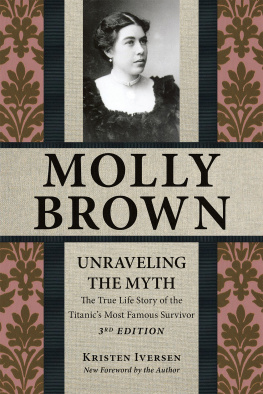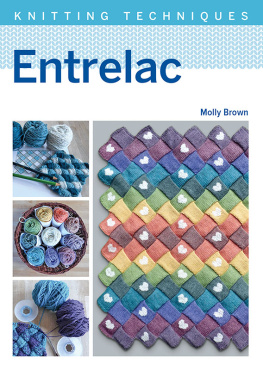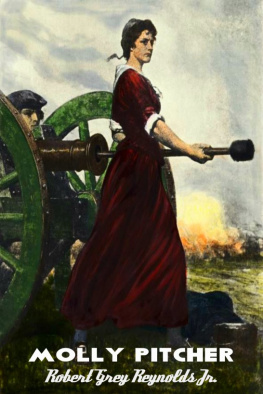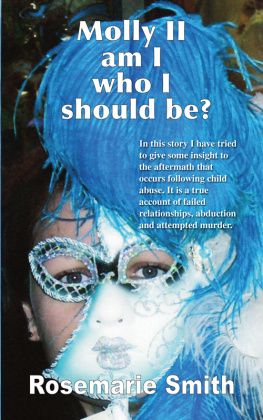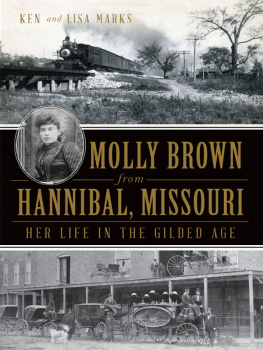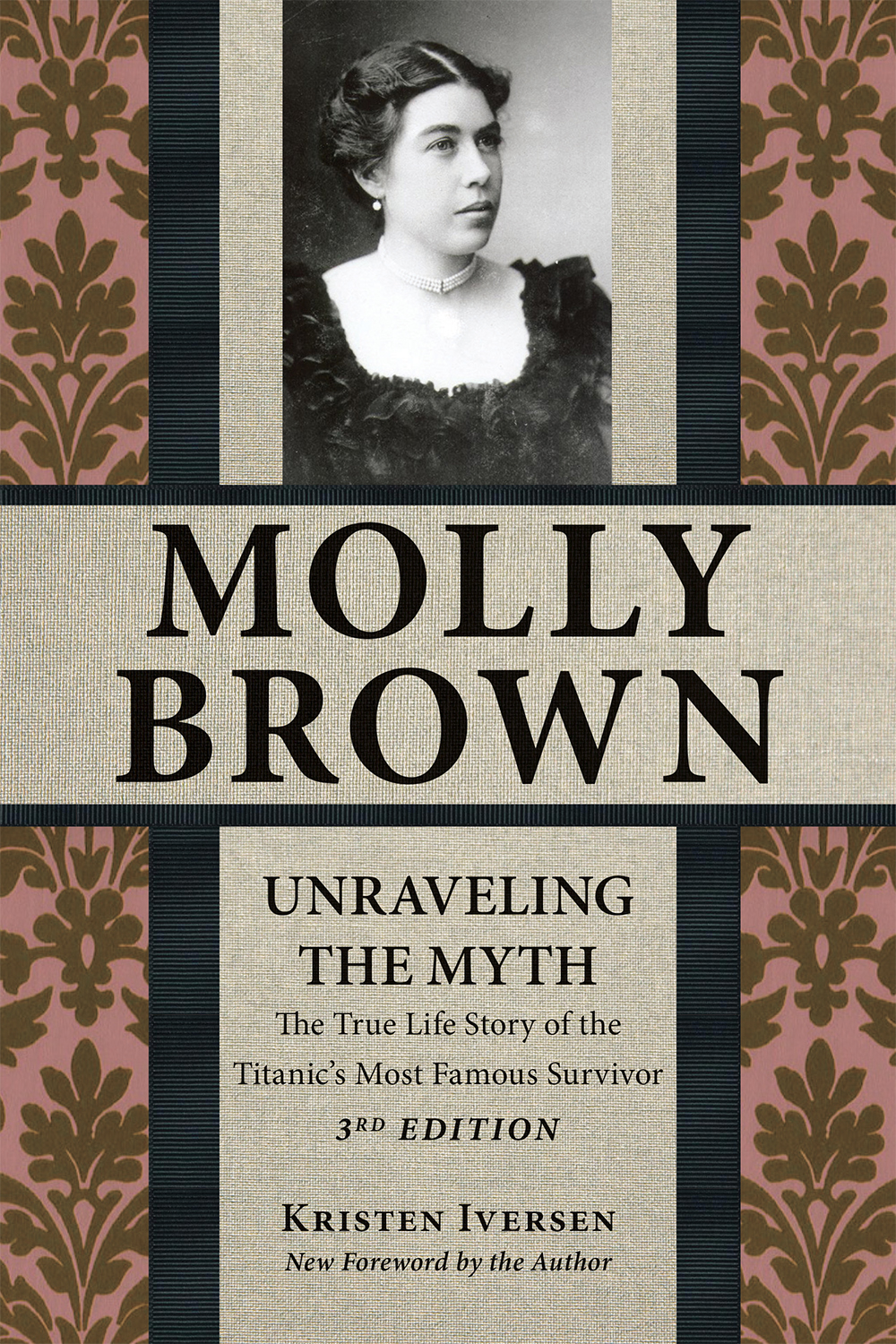Molly Brown
Unraveling the Myth
3 rd Edition
Kristen Iversen

For Sean and Nathan
Molly Brown: Unraveling the Myth, 3 rd Edition. Copyright 2018, 2010, 1999 by Kristen Iversen. All rights reserved. Printed in Canada. No part of this book may be used or reproduced in any manner whatsoever without written permission except in the case of brief quotations embodied in critical articles and reviews. Bower House books may be purchased with bulk discounts for educational, business, or sales promotional use. For information, contact Bower House P.O. Box 7459 Denver, CO 80207 or visit BowerHouseBooks.com.
Cover design by Margaret McCullough
Cover photos courtesy Denver Public Library, Western History Department
Library of Congress Cataloging-in-Publication Data
Iversen, Kristen.
Molly Brown: unraveling the myth / Kristen Iversen: foreword by
Muffet Brown.
p. cm.
Includes bibliographical references and index.
ISBN 978-1-55566-468-8 (paper: alk. paper) 1. Brown, Margaret Tobin, 18671932. 2. Titanic (Steamship). 3. Women social reformersUnited StatesBiography. 4. Denver
(Colo.)Biography. I. Title.
CT275.B7656I94 1999
910.91634dc21 98-49266
Foreword
Kristen Iversen
Never has there been a more important moment in American history for a story like the one of Margaret Tobin Brown. At a time when many Americans feel that the political, social, and cultural issues Margaret felt so strongly aboutworkers rights, womens rights, a fair and just society for all, regardless of race, color, or creedare experiencing new challenges and threats, it is wise to remind ourselves of her extraordinary voice and vision. And in the era of fake news, Margaret was one of the first, but certainly not the last, to experience how a story can be twisted and altered to fit the agenda of politics or profit, particularly for strong women with talent and ambition who attempt to enter the political arena. Years before women even had the right to vote, Margaret Tobin Brown ran for office and made her voice known in the face of enormous opposition. She made a lasting impact, both in the United States and abroad. But history and Hollywood have sought to marginalize and erase her accomplishments as well as her profound political and cultural influence. Even her name was changed to fit the (false) story of a saloon girl and society hostess.
In the nearly twenty years since Molly Brown: Unravelling the Myth was first published, Molly Browns place in the world has changed. For one thing, people now know she was never called Mollythat name was largely a Hollywood inventionand her real name, Margaret Tobin Brown, is taking its rightful place in history. And her story has righted itself as well. The legend of Molly Brown, which began even before Margarets death in 1932, gathered color and detail over the years with every retelling, so that by the time I began my research in the 1990s, the myth had been largely accepted as fact. This is no longer the case. The book was warmly received, winning the Colorado Book Award in Biography and the Barbara Sudler Award for Nonfiction, leading to a number of film biographies, notably A & E Biographys Molly Brown: An American Original , and more recently Molly Brown: Biography of a Changing Nation . The much-loved myth of a high-kicking saloon girlalbeit fun and interesting to audiencesreceded as the real story finally emerged. Margaret Tobin Brown was devoted to education, suffragism, feminism, the rights of children, the rights of miners, and social and political change. Now she can be understood and appreciated for who she really was: a progressive woman ahead of her time who believed she could make the world a better place for those less fortunate than herself. One aspect of the myth is true: born into impoverished circumstances, Margaret Tobin Brown truly did pull herself up by her bootstraps. And then she set her sights on helping others, from Leadville to Denver to New York and beyond. When Margaret was awarded the French Legion of Honor in 1932, it was for a long list of humanitarian and philanthropic activities that spanned two continents and represented decades of work.
The life story of Margaret Tobin Brown, while extraordinary in many ways, is also a quintessential American story and reflects the ways in which America, as a nation, changed dramatically in the post-Civil War era. She is memorialized in two museumsone at her childhood home, the Molly Brown Birthplace and Museum in Hannibal, Missouri, and the other at her home in Denver. But when Historic Denver first purchased Margarets home on Pennsylvania Avenue in 1971 and began restoration, there was little factual information available about who she actually was. What was known about her relied heavily on the hugely popular 1964 film, The Unsinkable Molly Brown (starring Debbie Reynolds), which had very little to do with Margarets real life story. After the publication of this book, the museum began a dramatic effort to evaluate and change the way Margarets story was told. The first step, funded by the National Endowment for the Humanities, was to bring scholars from around the country to read Molly Brown: Unraveling the Myth , consider the national and regional forces that shaped Margarets life, and then guide the museum in its creation of a new tour script. The museums sixty-five volunteers were retrained using this new, more historically accurate material, and a number of new educational programs resulted, including exhibits on Margarets world travels, the Irish community in Colorado, and many others. The most ambitious interpretive project, also funded by the National Endowment for the Humanities, was the creation of a permanent exhibit, a documentary entitled Molly Brown: Biography of a Changing Nation , and a series of interactive learning stations to help set the context for the world in which Margaret Brown lived. Now when visitors come to see the Molly Brown House Museum in Denver, they get a much more accurate sense of who Margaret Tobin Brown was, what she accomplished, and the political and social context of her remarkable life.
For me, one of the most delightful results of writing this book was bringing together many of Margaret Tobin Browns descendants from around the country. Her great-grandchildren were generous in sharing their familys history and artifacts with me as I was doing my research, and they continue to support the efforts of the Molly Brown House Museum. Today, there is a great deal of information available about Margarets life. The papers of the Brown family members are available at the Colorado Historical Society. A revival of the 1960 Broadway play, The Unsinkable Molly Brown (originally starring Tammy Grimes), opened with revised lyrics that more accurately represent Margarets life. The Molly Brown House Museum continues to offer teacher-training workshops designed to address how biography can be used as a teaching tool for history teachers around the countryindeed, one of the great pleasures of my life has been receiving letters and emails from young students (particularly girls and young women) working on school projects about Margaret Brown. Thanks to the work of people like Andrea Malcomb, Stephanie McGuire, Leigh Grinstead, Annie Robb Levinksy, and all the historians, scholars, and volunteers involved with the Molly Brown House Museum, Margarets story continues to find relevance in todays world.

